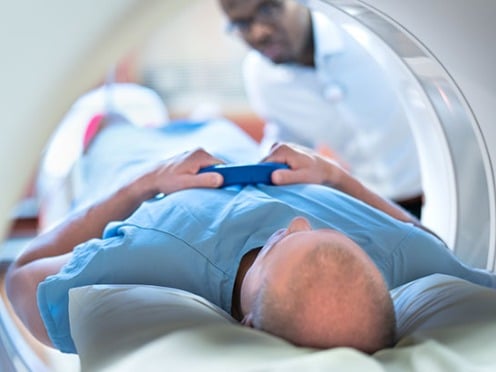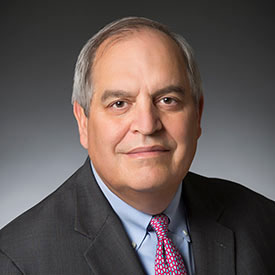
Top insights from the Endpoints at ASCO McKesson leadership panel
Five ways biopharma companies can invest in a future where cancer is a manageable disease.

Read time: 6 minutes
Decades ago, superstitious people whispered the word “cancer” because a diagnosis was often deemed a death sentence. Fortunately, the medical community has made great progress toward improving prognosis.
Advancements in research, early detection and treatment have turned many once difficult-to-treat types of cancer into increasingly manageable – and often curable – conditions. Breakthroughs in immunotherapy, targeted therapy, gene therapy and other treatments have vastly improved outcomes for a record number of patients.
There’s still a long way to go before some of the more aggressive cancers become one-time events, but for many patients today, these diagnoses no longer mean facing terminal disease. Instead, when patients can’t be cured outright, their cancer is managed as a chronic condition. A decade ago, for example, the survivability statistics for metastatic lung cancer had prompted the newly diagnosed to get their affairs in order. In recent years, however, treatment advances for Stage IV lung cancer are enabling these patients to not only live for many years, but also do so far more comfortably than treatment options allowed for just 10 years prior.
As more patients adjust to life with cancer as a chronic condition, they will need access to treatment close to home. And as our understanding of this disease improves and cancer treatments evolve, oncologists will need the ability to adjust treatments as needed and even explore whether a clinical trial might be appropriate. The US Oncology Network, which is supported by McKesson, is working to ensure these options are in place for patients. It helps approximately 1,400 independent physicians across the country provide value-based, integrated cancer care, supported by access to operational, financial and patient resources. The Network also runs one of the largest community-based oncology research programs in the U.S.
The Network’s president, Michael Seiden*, M.D., Ph.D., lays out a number of paths he believes biopharma and life sciences companies will likely take in pursuit of this goal. Here are just a few.
1. Expand the effectiveness of immunotherapy drugs
In the past, chronic oncology patients typically battled cancer via a lineup of limited treatment options – surgery, chemotherapy, radiation or targeted therapy. Since 2012, however, some cancer patients have experienced dramatic responses to immuno-oncology (IO) therapy treatments. These novel treatments work by teaching patients’ immune systems to essentially rev up their fight against cancer. Immunotherapy appeals to patients because it collaborates with their own immune system versus chemotherapy, which destroys several normal tissues. In addition, the side effects with immunotherapy tend to be milder than those caused by chemotherapy.
IO therapy is relatively new, so scientists are still learning how to maximize its effectiveness. Currently, only a subset of patients respond to it — “maybe only 30% or 40% of melanoma, and maybe only 15% of solid tumors,” says Dr. Seiden. But when it works, cancer may go into remission for years. Boosting patients’ responses to IO therapy or increasing the proportion of patients who respond to this therapy could help more people live with cancer as a chronic, manageable condition.

Michael Seiden, M.D., Ph.D., president, The US Oncology Network
“There is a huge push to figure out how to make immuno-oncology agents more active in a larger portion of patients,” Dr. Seiden says. “As immuno-oncology agents gain steam, and researchers figure out how to increase the response rate, this giant waterfall of small, orally available, bio-targeted or genomically targeted drugs will continue to persist in the Golden Age of the 2020s.”
2. Harness the power of gut bacteria
An increasing number of physicians practicing IO therapy are putting their trust in the gut.
“If you have good bacteria in your colon, you may be more likely to respond to a particular anticancer drug called a PD-1 inhibitor, and if you have bad bacteria in your colon, you will not,” Dr. Seiden says. “In some academic medical centers, it’s becoming important to start building microbiome databases of what bacteria are hanging out in the feces of patients.”
Altering the gut’s bacterial composition may help more cancer patients respond positively to immunotherapy. Fecal microbiota transplants and oral supplements may become more commonly administered as more research is conducted on these treatments’ efficacy.
“If the chances of you responding depend on the microbiomes in your digestive tract,” Dr. Seiden says, “there are going to be biopharma companies that, in the not-too-distant future, will be very interested in knowing what bacteria are sitting in your colon.”
3. Partner with physicians to encourage appropriate therapy
Since the human genome was sequenced nearly 20 years ago, researchers have discovered numerous genetic mutations linked with different cancers. In recent years, pharmaceutical companies have used this knowledge to create precision medications that inhibit rare mutations found in cancer cells without affecting normal, healthy tissue.
Because identifying rare mutations in a patient’s tumor can be done quickly and affordably, this has become a priority within the industry and has become the standard of “best care” in many tumor types, especially in patients with advanced disease. Pharmaceutical companies can be important partners in spearheading education about the rapidly evolving practice of precision medicine to help ensure the best therapeutic choice is made for each patient.
“Identifying physician champions and training them in the vernacular of precision medicine, and keeping the lines of communication open between the rapidly evolving therapeutic pipeline from pharma and biotech is potentially a real opportunity, something I have referred to as precision education,” Dr. Seiden says.
4. Create ongoing relationships with biobanks
Cancer biobanks collect and store tissue samples, bodily fluids, genetic material, and clinical data from cancer patients and healthy controls to facilitate research and development. These depositories promote precision medicine, allowing researchers to make discoveries, monitor cancer therapies and develop new drugs.
“How should we work with biobanks?” Dr. Seiden ponders. “It’s very important for companies to know what mutations sit within each cancer type, who best responds to different targeted therapy, and which patients are long-term survivors.”
If pharmaceutical companies established a consistent partnership with cancer biobanks, it could cement the future for the development of new and much-improved treatment options. While these collaborations are still few within the industry, a handful of pharma companies are already working closely with biobanks to examine critical data needed to accelerate the development of breakthrough precision medications.
5. Catalyzing a step change in survival rates through access
Dr. Seiden predicts that the COVID-19 pandemic will result in a large number of individuals who are unemployed, underemployed and underinsured, which may lead to them needing government-funded healthcare. The government may therefore take a more active role in negotiating healthcare costs, which could make cancer treatments more affordable and accessible to patients.
“While a pharma company would never want to compare its PD-1 inhibitor to another PD-1 inhibitor,” Dr. Seiden says, “it would make perfect sense if the government was paying for a huge swath of healthcare and would want to do a randomized trial of three PD-1 inhibitors against each other.”
If competing medications were found to be therapeutically equivalent, the government may “start competing them on price, as far as which ones it will pay for,” Dr. Seiden says. “This may make treatments attainable for greater numbers of Americans—the ultimate goal for biopharma, physicians and patients alike.”
Originally published October 2020.
*Since the time of publication, Dr. Seiden has left the business